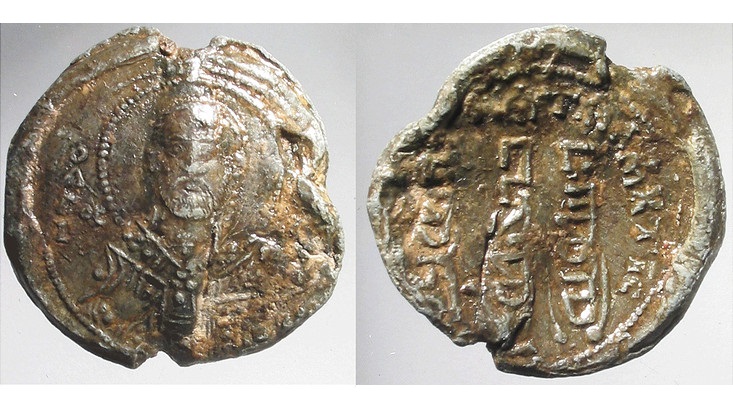"Entangled Cultures - Authentication and Sealing in the Byzantine Border Lands During the 11th and 12th Centuries"Paper presented by Stefan Heidemann (Universität Hamburg) and Claudia Sode (Universität Köln)
2 February 2018
On Saturday, March 10, 2018, Stefan Heidemann, Universität Hamburg and Claudia Sode, Universität Köln, will present a joint paper under the title "Entangled Cultures - Authentication and Sealing in the Byzantine Border Lands During the 11th and 12th Centuries" at the Ninth Seminar on Middle Eastern and Central Asian Numismatics in Memoriam Boris Kochnev (1940-2002). The call for papers is open now and further presentations will be accepted until February 10, 2018. For more information contact: aleksandr.naymark"AT"hofstra.edu.

Abstract of the paper presented by Stefan Heidemann and Claudia Sode:
In the Islamic Middle East metal seals were used for different purposes than in Byzantium. Only in contact with Byzantium, lead seals were applied to authenticate authentication of letters and documents. Since the second half of the 4th/10th century the Byzantine empire expanded toward northern Syria, Mesopotamia and Armenia. For indigenous Muslim princes the necessity arose to acknowledged Byzantine suzerainity, and for ecclesiastical officials from the Arabic and Syriac speaking regions to respond to the Byzantine administrative traditions. Most seals of that group carry images of the Virgin and military saints of Byzantine type on one side and on the other an Arabic, Syriac or Armenian formulars like „he trusts in God“ in Syriac (sabreh b-alāhā) and Arabic (yathiqu billāh). The iconography dates them into the 5th/11th and 6th/12th. The images of saints seems to be applied regardless the religious faith of the owner. On some of them titles like Vestarches, Patrikios (al-baṭrīq) or Protospatharios (al-ibruṭusbatār) can be found.
Muslim princes, which were not under Byzantine sway, had to correspond with imperial institutions by applying lead-seals. There are some instances, the Kākūyids in Iran, and somewhat later the Dānishmandids and the Rūm-Saljūqs in Anatolia.
Most material for this study seem to come from a large find that was made in Constantinople during the 1860s. A correspondence between the J. G. Stickel and A. D. Mordtmann Jr. describes the circumstances of the find (Heidemann - Sode 1999-2000). Thousands of Byzantine seals came to light in the course of foundation works for the new Ministry of War. Mordtmann, therefore, suggested an important archive 1204 at the Byzantine Forum Theodosii or Tauri before 1204. The seals were dispersed in trade in the following decades. Up to now, about 170 seals with Oriental scripts in various collections could be connected with this hoard. A large number of them are preserved in the collection of Center for Byzantine Studies, Harvard University, at Dumbarton Oaks.


